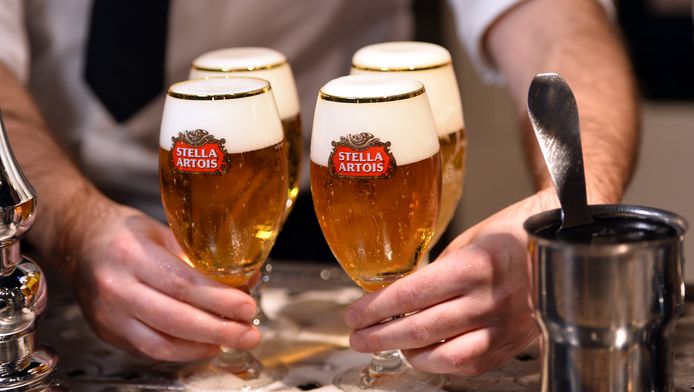The famous De Hoorn brewery, the birthplace of Stella Artois beer, celebrates its centenary this month, marking 100 years since it was rebuilt after the original site was destroyed during World War I.
Two years after the new brewery was built, De Hoorn launched a beer that would become world famous and would – until this day – be the world’s most consumed Belgian beer.
The iconic Belgian pilsner lager witnessed a substantial 11.7% increase in global sales over the past year, according to the latest data released by parent company AB InBev, solidifying its status as one of the leading players in the beer market.
Established as a "global brand" alongside Budweiser and Corona within the Belgian-Brazilian conglomerate, Stella Artois has made significant strides since its inception. The world's largest brewer, AB InBev, recognising its global appeal, has expanded production beyond its Leuven home to meet the increasing demand.
While the original Brabant site has a capped production capacity of 10 million hectolitres of Stella per year, brewing in other distant markets, such as the United States, makes it possible for the beer to achieve its global reach while aligning with the company’s sustainability goals by reducing CO2 emissions from long-distance transport.
Related News
- What exactly is a winter beer, and which ones are worth trying?
- A sobering look at beer’s new trend
- What makes Belgium's 'oud bruin' beer so special
Reflecting its widespread popularity, Stella Artois is now available in 121 countries and has secured its place as one of the world's highest-value beer brands in recent years. The brand's journey traces back to 1964 when the Artois group initiated its international export efforts, marking the culmination of a century-long history that began in 1923 at the De Hoorn site in Leuven.
Back then, the Artois group, inspired by Czech brewing methods, embarked on a journey to produce bottom-fermented beers, a trend gaining popularity in Belgium. The brewery's commitment to experimentation eventually led to the creation of a blonde beer using Czech barley malt, named "X" in October 1922. This beer, with a slightly higher density, emerged as the precursor to the beloved Stella Artois.
First brewed in 1925 and registered as a trademark in January of the following year, Stella Artois was born, named after the Christmas star and initially marketed as a Christmas beer. Its success surpassed the holiday season, evolving into a year-round favourite. Post-World War II, Stella's popularity soared, leading to its debut on the international stage in 1964.
Despite subsequent mergers and acquisitions within the AB InBev family, including Piedboeuf, Interbrew, AmBev, Anheuser Busch, and SABMiller, Stella Artois retained its global prominence. Today, the De Hoorn brewery, where it all began, has transformed into a modern complex housing a bar, restaurant, event rooms, and co-working space since it stopped brewing in 1986.
Stella Artois, beyond being a classic Belgian pilsner lager, embodies craftsmanship, quality, and conviviality. It has garnered international acclaim, receiving gold medals at prestigious events like the World Beer Awards and the Great American Beer Festival.
More than just a beer, Stella Artois stands as a global icon, a flag-bearer for Belgium on the international stage which, according to its parent company, “symbolises friendship, celebration, good taste, and sophistication, and enriches social gatherings, sporting events, and culinary experiences worldwide.”

